Sarah L. Johnson's Blog, page 40
September 22, 2020
The Vanishing Half by Brit Bennett, the bestselling historical saga of race, privilege, family, and identity
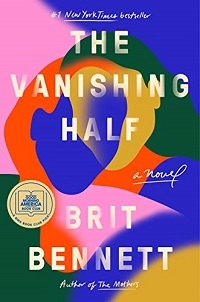 Brit Bennett’s second novel, a national bestseller, deserves all the attention it’s been getting. Spanning over three decades, from the Jim Crow South through 1980s California, it centers on two sisters and their daughters, and how American society’s intense focus on skin color warps the natural course of their lives.
Brit Bennett’s second novel, a national bestseller, deserves all the attention it’s been getting. Spanning over three decades, from the Jim Crow South through 1980s California, it centers on two sisters and their daughters, and how American society’s intense focus on skin color warps the natural course of their lives. Desiree and Stella Vignes are twins: identical, but not alike. They come of age in 1950s Mallard, Louisiana, a Black farming community too small for any map, and whose residents take pride in the lightness of their complexions. At sixteen, both girls flee their hometown for New Orleans—they have reasons—and their lives diverge not long after.
By 1968, after an abusive marriage, Desiree returns to Mallard with her “blueblack” daughter, Jude, whose presence stands out and startles everyone in town. After cutting herself off from her past, Stella, meanwhile, has successfully passed into white society and lives with her white husband and blonde daughter, Kennedy, in a wealthy LA neighborhood. When Jude and Kennedy happen to meet as young women—in a way that manages not to feel contrived—it has major repercussions.
Bennett draws her characters with empathy while making their flaws very plain; the story depicts a variety of relationships especially well and packs a punch with its emotional realness. The story movingly explores contemporary issues of race and gender identity and the costs incurred when abandoning one’s earlier life for a new, different persona. The dialogue feels pitch-perfect, and the story moves with engrossing momentum as the mystery builds about whether Stella’s carefully built lies will unravel. This is an outstanding work of fiction, a thought-provoking literary saga that everyone should read.
The Vanishing Half was published by Riverhead this summer. I read it from a personal copy and reviewed it for August's Historical Novels Review. As the cover indicates, the novel has been a #1 New York Times bestseller and the Good Morning America book club pick for June, and a few days ago it was chosen for the fiction longlist for this year's National Book Award.
Published on September 22, 2020 08:06
September 16, 2020
Before the Crown by Flora Harding fictionalizes the royal courtship of Elizabeth II and Prince Philip
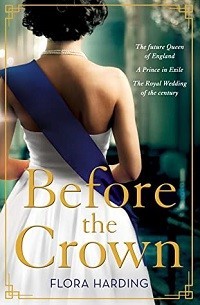 Tailor-made for enthusiasts of The Crown, Flora Harding’s novel explores the intricate courtship between Elizabeth II and her consort, Prince Philip, now 94 and 99 years old. They married in 1947 and who – as avid royal watchers know – recently celebrated the wedding of their granddaughter Beatrice. Both the show and the novel provide the convincing illusion of breaching the wall that separates these world-famous, ultimately unknowable people from the rest of us.
Tailor-made for enthusiasts of The Crown, Flora Harding’s novel explores the intricate courtship between Elizabeth II and her consort, Prince Philip, now 94 and 99 years old. They married in 1947 and who – as avid royal watchers know – recently celebrated the wedding of their granddaughter Beatrice. Both the show and the novel provide the convincing illusion of breaching the wall that separates these world-famous, ultimately unknowable people from the rest of us. While it can be read as a prequel to the Netflix series, Before the Crown stands independently and shouldn’t be thought of as “fan fiction.” At its heart, it reveals a love story presented as both predestined (since Elizabeth’s heart is set on Philip as a teenager) and unlikely (due to their very different temperaments, and the political roadblocks in the way of their union).
Harding is an experienced historical novelist who previously wrote Elizabethan-era fiction as Pamela Hartshorne. Her research into this considerably more modern timeframe is as thorough as ever, and her multifaceted characters have well-developed interior lives. Elizabeth, the shy and steadily reliable elder daughter of King George VI, carefully hides her feelings for Philip, whom she’s adored for years, behind a polite reserve. Philip, an outgoing Greek prince and Royal Navy lieutenant uprooted from his home country at a young age, finds himself nudged toward Elizabeth by his maternal uncle, “Dickie” Mountbatten, who knows she’d be a great catch.
Philip enjoys his naval career and a social life in which he does as he pleases, but he comes to appreciate Elizabeth’s kindness and generosity of spirit. His initiation into royal life is rocky and complicated by his sisters’ marriage to prominent Germans (former SS officers, even) and his future in-laws’ antipathy toward him as a suitor. George VI is stuffy and tradition-bound, and it doesn’t help that Philip finds hunting a dull pastime. Eventually he must decide whether to continue to pursue Elizabeth, knowing how much his lifestyle will change if they marry. The scenes at Balmoral Castle, a favorite residence of their joint ancestor Queen Victoria, evoke the rustic beauty of the Scottish landscape as the pair get to know each other better.
For readers interested in imagining what it’s like to be part of the British royals’ inner circle, Before the Crown fulfills its promises. It’s satisfying escapism perfect for these stressful times.
Before the Crown will be published tomorrow (Thursday, Sept. 17th) as an ebook by One More Chapter/HarperCollins. The paperback will be out in December. Thanks to the publisher for access via NetGalley.
Published on September 16, 2020 16:12
September 12, 2020
The Forgotten Kingdom by Signe Pike continues an epic story of sixth-century Scotland
 In the second book of her epic trilogy of sixth-century Scotland, Pike adeptly balances brutal power struggles and Celtic mysticism.
In the second book of her epic trilogy of sixth-century Scotland, Pike adeptly balances brutal power struggles and Celtic mysticism. Languoreth, the determined heroine from The Lost Queen (2018), is now the longtime wife of the King of Strathclyde's likely heir and a mother of four. Distraught to have her husband and twin brother, Lailoken, on opposite sides of the Battle of Arderydd, Languoreth finds her world further devastated when her eight-year-old daughter, Angharad, who was away learning druidic ways from Lailoken, vanishes in the battle’s aftermath.
Pike interweaves their three narratives as they endure emotional losses and begin physical and inward-focused journeys to regain strength. Moving from the shaded depths of the Caledonian Wood to the Pictish kingdom in the Orkney Islands and beyond, the story delves into the beguiling religious and cultural lore of several ancient Scottish peoples.
This book doesn’t stand alone, but ongoing readers will relish the escape into Pike’s fully developed milieu while seeing its connections to Arthurian legend grow more prominent; among other aspects, Lailoken serves as a historical model for Merlin.
The Forgotten Kingdom will be published on September 15th by Atria/Simon & Schuster (488pp, hardcover and ebook). I reviewed it for the August issue of Booklist (reprinted with permission). I'd previously reviewed The Lost Queen two years ago. As mentioned, interested readers will likely want to start with book one, since it provides considerable context for the interpersonal relationships and power imbalances in this novel. I look forward to continuing the story later on. The author's website says that book three will be out in September 2023.
Published on September 12, 2020 11:33
September 10, 2020
Bits and pieces of historical fiction news
 Yesterday afternoon, Maggie O'Farrell's historical novel Hamnet took home the Women's Prize for Fiction. It was published in the UK by Tinder Press (cover image at left) and in the US by Knopf; in Canada, the title is Hamnet and Judith. I've read it, and it's a deserving winner. Set in Shakespeare's England, the playwright is never named, but the story movingly observes the relationships between Agnes, a wise woman in 16th-century Warwickshire; her husband, a glovemaker's son; and their three children, including twins Hamnet and Judith. Hamnet will die at age 11, an event which devastates each of the family members, who express their sorrow in different ways.
Yesterday afternoon, Maggie O'Farrell's historical novel Hamnet took home the Women's Prize for Fiction. It was published in the UK by Tinder Press (cover image at left) and in the US by Knopf; in Canada, the title is Hamnet and Judith. I've read it, and it's a deserving winner. Set in Shakespeare's England, the playwright is never named, but the story movingly observes the relationships between Agnes, a wise woman in 16th-century Warwickshire; her husband, a glovemaker's son; and their three children, including twins Hamnet and Judith. Hamnet will die at age 11, an event which devastates each of the family members, who express their sorrow in different ways.Also in the UK, Melissa Oliver won the Romantic Novelists' Association's Joan Hessayon Award, which celebrates new writers, for her debut historical romance The Rebel Heiress and the Knight (Harlequin/Mills and Boon).
Historical novelist Susanne Dunlap has a new podcast series, It's Just Historical. Each episode contains an interview with an author or other personality in the historical fiction community, including C. W. Gortner (The First Actress), Christina Baker Kline (The Exiles), Kris Waldherr (The Lost History of Dreams), and many more.
The BBC's Books section has a feature article, The Strange World of the Royal Family, in which Hephzibah Anderson speaks to two historical novelists, Wendy Holden (The Royal Governess/The Governess) and Clare McHugh (A Most English Princess) about their new works of fiction. Holden focuses on Marion Crawford "Crawfie," the governess for Princesses Elizabeth and Margaret during their childhood, while McHugh's subject is Victoria, Princess Royal, the eldest daughter of Queen Victoria, who became Empress of Germany.
Wendy Holden also has an article for Read It Forward on the must-haves of good historical fiction.
Sarah Penner's The Lost Apothecary (Park Row, March) will be one to watch for next winter. In an interview with Publishers Weekly, she speaks about the background to her debut, which delves into female power, lethal poisons, and mystery in Georgian London.
For Writer Unboxed, Liza Nash Taylor expresses what it's like to be a debut novelist at 60. Her novel Etiquette for Runaways (Blackstone, Aug.) is set in the Jazz Age of the 1920s.
Rebecca D'Harlingue (The Lines Between Us, set in the late 15th century and today) tells How to Do World Building Right in Historical Fiction for Writers' Digest.
And Parade Magazine has fall historical fiction recommendations from 12 other historical novelists with new books out.
Published on September 10, 2020 06:59
September 8, 2020
Creating verisimilitude in historical fiction, an essay by Linda Kass, author of A Ritchie Boy
Thanks to Linda Kass for contributing an essay on how she created a true-to-life historical backdrop in her fiction. Her novel A Ritchie Boy was recently published by She Writes Press.
~
Creating Verisimilitude in Historical FictionLinda Kass
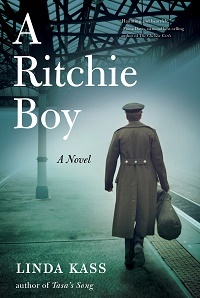 As a trained journalist with two works of historical fiction under my belt (and am beginning a third), using the accurate facts of history matters to me. Also critical is that the concrete elements in the story—whether the food, the clothes, or the setting itself—are aligned with the time period. This is how a writer can create verisimilitude in a historical story.
As a trained journalist with two works of historical fiction under my belt (and am beginning a third), using the accurate facts of history matters to me. Also critical is that the concrete elements in the story—whether the food, the clothes, or the setting itself—are aligned with the time period. This is how a writer can create verisimilitude in a historical story.
Research plays a larger than life role in keeping authenticity on track. My novel, A Ritchie Boy, takes place between 1938 and 1948. Protagonist Eli Stoff, a character inspired by my father, journeys from Vienna to the Austrian Alps, from New York City to Columbus, Ohio. He is trained to be an Intelligence officer at a US Army camp near Hagerstown, Maryland called Camp Ritchie and the reader experiences him in action stationed in an abandoned villa in a Paris suburb called Le Vesinet. He learns all about Shanghai where his cousin Arthur had escaped at the same time Eli left Vienna for America.
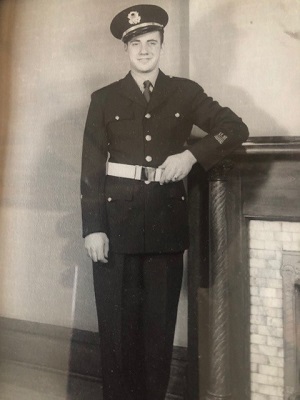 This is a photo of my dad in his college ROTC uniform before enlisting.
This is a photo of my dad in his college ROTC uniform before enlisting.
This framed photo set to the right of my laptop as I wrote A Ritchie Boy.
In my novel of interrelated stories, the reader learns that Eli Stoff is one of thousands of “Ritchie Boys” whose understanding of the German language and culture led them to their undercover work on the European front to help the Allies win World War II. To convey his decade journey, I had to research many discrete facts. For example, I had to research skiing techniques, as well as the particulars of Alpine skiing back in the late ‘30s to write about Eli’s ski trip with classmates to the western Austrian province of Tyrol. I explored the kinds of music the characters might listen to during this time since seven of the twelve stories include different types of music—from classical to big band hits, from bebop to songs from Broadway musicals of the day. I needed to understand the local geography of all locations that stories were set, as well as the cultural norms of that time period. Through both primary and secondary sources, I learned about the details around the arrival and review process at Ellis Island, the life on the Ohio State University campus as the country prepared for war, and the nuances of a professional photographer who is my point of view character in the final story, “The Wedding.”
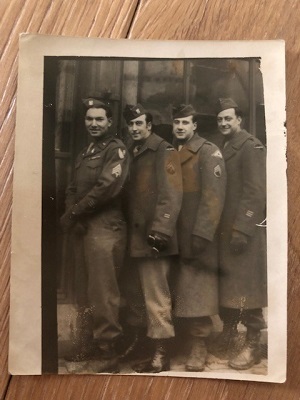 I found this photo and it helped me to imagine Eli’s parmy buddies at Camp Ritchie-Henry White, Bobby Salter, and Matt Schultz. My dad is second from the right. I could imagine the camaraderie that was part of their time together.
I found this photo and it helped me to imagine Eli’s parmy buddies at Camp Ritchie-Henry White, Bobby Salter, and Matt Schultz. My dad is second from the right. I could imagine the camaraderie that was part of their time together.
And, while research is part of all historical fiction, it is important for the historical novelist not to let the facts of history overwhelm the story itself. In a story called “The Interrogation,” Eli Stoff faces a young German soldier who had escaped during the Ardennes Counteroffensive (what we now know as Battle of the Bulge, the last German offensive campaign on the Western Front during World War II). “Across the table, the young soldier remained silent, staring at his hands, which he clasped tightly on the cold aluminum. A lighter, a broken cigarette, and a black-and-red enameled Deutsche Jungvolk membership badge lay to the side.” Here the reader learns that the young prisoner is a member of Hitler Youth. “Eli was trained to ‘understand.’ He’d arrived in Paris in late December, part of a six-man military intelligence team. His orders were simple: arrest all Nazis impersonating Allied officers, put them through rudimentary questioning, write up a report. But something about Malcolm Schlick made this case more complex. Eli couldn’t put his finger on it.” Here we learn what a Ritchie Boy was tasked to do as the story unfolds.
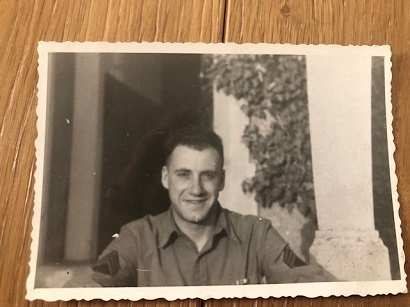
My dad was always smiling even during war. It is how I remember him. His resilience and positive nature carries with him throughout his life, and I gave those characteristics to Eli Stoff.
So, in historical fiction, one must strike a balance between history and story by integrating the facts, so that the history lesson is there, and the reader doesn’t even notice.
~
 Linda Kass
Linda Kass
(credit: Lorn Spolter)About the novel:
In this moving and memorable novel-in-stories—inspired by her father’s life—Linda Kass shares the little-known account of the Ritchie Boys. Often Jewish German-speaking immigrants, the Ritchie Boys worked in US Army Intelligence and helped the Allies win World War II. Set during the dawn of World War II and the disruptive decade to follow, A Ritchie Boy is the poignant tale of one young immigrant’s triumph over adversity as he journeys from Europe to America, and from boyhood to manhood.
About the author:
Linda Kass began her career as a magazine writer and correspondent for regional and national publications. Her work has previously appeared in Time, The Detroit Free Press, Columbus Monthly, and, more recently, Full Grown People, The MacGuffin, and Kenyon Review Online. She is the author of the historical World War II novel Tasa’s Song (2016) and is the founder and owner of Gramercy Books, an independent bookstore in central Ohio. https://www.lindakass.com/
~
Creating Verisimilitude in Historical FictionLinda Kass
 As a trained journalist with two works of historical fiction under my belt (and am beginning a third), using the accurate facts of history matters to me. Also critical is that the concrete elements in the story—whether the food, the clothes, or the setting itself—are aligned with the time period. This is how a writer can create verisimilitude in a historical story.
As a trained journalist with two works of historical fiction under my belt (and am beginning a third), using the accurate facts of history matters to me. Also critical is that the concrete elements in the story—whether the food, the clothes, or the setting itself—are aligned with the time period. This is how a writer can create verisimilitude in a historical story.Research plays a larger than life role in keeping authenticity on track. My novel, A Ritchie Boy, takes place between 1938 and 1948. Protagonist Eli Stoff, a character inspired by my father, journeys from Vienna to the Austrian Alps, from New York City to Columbus, Ohio. He is trained to be an Intelligence officer at a US Army camp near Hagerstown, Maryland called Camp Ritchie and the reader experiences him in action stationed in an abandoned villa in a Paris suburb called Le Vesinet. He learns all about Shanghai where his cousin Arthur had escaped at the same time Eli left Vienna for America.
 This is a photo of my dad in his college ROTC uniform before enlisting.
This is a photo of my dad in his college ROTC uniform before enlisting. This framed photo set to the right of my laptop as I wrote A Ritchie Boy.
In my novel of interrelated stories, the reader learns that Eli Stoff is one of thousands of “Ritchie Boys” whose understanding of the German language and culture led them to their undercover work on the European front to help the Allies win World War II. To convey his decade journey, I had to research many discrete facts. For example, I had to research skiing techniques, as well as the particulars of Alpine skiing back in the late ‘30s to write about Eli’s ski trip with classmates to the western Austrian province of Tyrol. I explored the kinds of music the characters might listen to during this time since seven of the twelve stories include different types of music—from classical to big band hits, from bebop to songs from Broadway musicals of the day. I needed to understand the local geography of all locations that stories were set, as well as the cultural norms of that time period. Through both primary and secondary sources, I learned about the details around the arrival and review process at Ellis Island, the life on the Ohio State University campus as the country prepared for war, and the nuances of a professional photographer who is my point of view character in the final story, “The Wedding.”
 I found this photo and it helped me to imagine Eli’s parmy buddies at Camp Ritchie-Henry White, Bobby Salter, and Matt Schultz. My dad is second from the right. I could imagine the camaraderie that was part of their time together.
I found this photo and it helped me to imagine Eli’s parmy buddies at Camp Ritchie-Henry White, Bobby Salter, and Matt Schultz. My dad is second from the right. I could imagine the camaraderie that was part of their time together.And, while research is part of all historical fiction, it is important for the historical novelist not to let the facts of history overwhelm the story itself. In a story called “The Interrogation,” Eli Stoff faces a young German soldier who had escaped during the Ardennes Counteroffensive (what we now know as Battle of the Bulge, the last German offensive campaign on the Western Front during World War II). “Across the table, the young soldier remained silent, staring at his hands, which he clasped tightly on the cold aluminum. A lighter, a broken cigarette, and a black-and-red enameled Deutsche Jungvolk membership badge lay to the side.” Here the reader learns that the young prisoner is a member of Hitler Youth. “Eli was trained to ‘understand.’ He’d arrived in Paris in late December, part of a six-man military intelligence team. His orders were simple: arrest all Nazis impersonating Allied officers, put them through rudimentary questioning, write up a report. But something about Malcolm Schlick made this case more complex. Eli couldn’t put his finger on it.” Here we learn what a Ritchie Boy was tasked to do as the story unfolds.

My dad was always smiling even during war. It is how I remember him. His resilience and positive nature carries with him throughout his life, and I gave those characteristics to Eli Stoff.
So, in historical fiction, one must strike a balance between history and story by integrating the facts, so that the history lesson is there, and the reader doesn’t even notice.
~
 Linda Kass
Linda Kass(credit: Lorn Spolter)About the novel:
In this moving and memorable novel-in-stories—inspired by her father’s life—Linda Kass shares the little-known account of the Ritchie Boys. Often Jewish German-speaking immigrants, the Ritchie Boys worked in US Army Intelligence and helped the Allies win World War II. Set during the dawn of World War II and the disruptive decade to follow, A Ritchie Boy is the poignant tale of one young immigrant’s triumph over adversity as he journeys from Europe to America, and from boyhood to manhood.
About the author:
Linda Kass began her career as a magazine writer and correspondent for regional and national publications. Her work has previously appeared in Time, The Detroit Free Press, Columbus Monthly, and, more recently, Full Grown People, The MacGuffin, and Kenyon Review Online. She is the author of the historical World War II novel Tasa’s Song (2016) and is the founder and owner of Gramercy Books, an independent bookstore in central Ohio. https://www.lindakass.com/
Published on September 08, 2020 04:00
September 5, 2020
Old Lovegood Girls by Gail Godwin spans four decades of female friendship
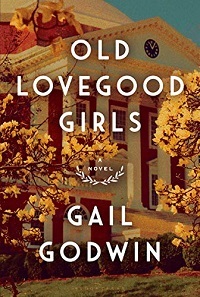 Beautifully evoking a longtime friendship’s transformative power, Godwin traces two women’s intellectual development and life decisions, and how they intertwine, across four decades.
Beautifully evoking a longtime friendship’s transformative power, Godwin traces two women’s intellectual development and life decisions, and how they intertwine, across four decades. In 1958, Meredith Grace (“Merry”) Jellicoe and Feron Hood are matched as roommates at Lovegood College, a two-year school for women in North Carolina. The daughter of tobacco farmers, Merry has a welcoming personality, and the college dean, Susan Fox, believes she’ll be a comforting influence on the guarded Feron, who had a troubled home life. She’s right. The two become close; both are talented writers, sharing deep conversations on literary approaches and reading each other’s stories. Envious of Merry’s writing fluency, Feron feels she can do even better and uses this emotion to push herself forward.
Old Lovegood Girls focuses on connections rather than competition, though, and in this and other aspects, it gracefully subverts the tropes that pervade fiction about women. Likewise, Lovegood College, one of those old-fashioned, rigid-seeming institutions with longstanding rituals and values, breaks away from stereotype. Dean Fox, for example, is a wonderful character, an open, nurturing administrator with a full inner life. After the girls’ first semester, tragedy forces Merry to return home and take up family responsibilities. She and Feron correspond sporadically and rarely meet, but their friendship is of the type where they know each other’s qualities so well (they stay in each other’s “reference aura,” as Feron expresses it) that they rely on each other as guides through life.
With an unhurried pace that enables characters to develop and mature, the story delves with eloquent wisdom into a wide swath of issues: love, grief, family relationships, the value of storytelling, even (in a way that feels slyly meta) the challenges of writing historical novels. It’s a fine example of introspective fiction, and an ideal read for these uneasy times.
Old Lovegood Girls was published by Bloomsbury this year; I read it from an Edelweiss e-copy and reviewed it for August's Historical Novels Review. I became interested in it after hearing the author interviewed by Jenna Blum at A Mighty Blaze on Facebook Live in May. The historical college setting was enticing, and the discussion about the novel's themes piqued my attention. I also love the cover.
Published on September 05, 2020 06:24
September 2, 2020
Death in Delft by Graham Brack opens a new mystery series set in the 17th century
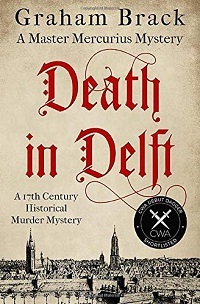 Master Mercurius, a young lecturer at the University of Leiden, has joined the ranks of clerical sleuths worth following in historical mysteries. In 1671, his Rector asks him to fulfill a request from the Mayor of Delft to investigate a certain matter on that city’s behalf. They need a man with “a quick wit, a knowledge of God’s law, and abundant energy,” which fits Master Mercurius very well. He is our narrator, and his understated dry humor, combined with practical sensibilities and sincere religious devotion, make his tale infectiously readable.
Master Mercurius, a young lecturer at the University of Leiden, has joined the ranks of clerical sleuths worth following in historical mysteries. In 1671, his Rector asks him to fulfill a request from the Mayor of Delft to investigate a certain matter on that city’s behalf. They need a man with “a quick wit, a knowledge of God’s law, and abundant energy,” which fits Master Mercurius very well. He is our narrator, and his understated dry humor, combined with practical sensibilities and sincere religious devotion, make his tale infectiously readable. Following a brief shipboard voyage along the Vliet to Delft, he arrives at the Town Hall and learns about the situation. Three girls, all about eight years old, were abducted from their families. The body of one of them, the unfortunate Gertruyd Lievens, was found buried in a field, a hand-carved cross atop the grave. The two others, a fishwife’s bastard daughter and a rich merchant’s child, remain missing, and with the harsh winter weather, one fears the worst. Mercurius goes about interviewing relevant parties while determining whether the girls, who didn’t know each other, had anything in common aside from their age.
The work gets him interacting with some of Delft’s leading citizens, including logical scientist Antoni van Leeuwenhoek, future father of microbiology, and artist Johannes Vermeer, head of a large, boisterous family. Mercurius makes the rounds of local households for dinner, and visiting Vermeer happily returns us to Girl with a Pearl Earring territory. Mercurius has his own intriguing secret: he’s a Catholic priest disguised as a Protestant clergyman (both careers were so nice, he was ordained twice), which the painter guesses and appreciates. Concisely plotted with well-placed period details, this mystery is just the right length and a promising start to this new series.
Death in Delft was published by Sapere in April in hb and ebook. It's a quick read at 232pp, and the second in the series, Untrue Till Death, is already out. As the cover denotes, it was shortlisted for the Crime Writers' Association's Debut Dagger. I reviewed it for the latest Historical Novels Review issue. I noted as I was working on this post that a Dutch reader gave it high marks on Amazon for geographic and historical accuracy, including Dutch naming conventions - nice to see.
Published on September 02, 2020 16:08
August 30, 2020
Allison Montclair's newest historical mystery, A Royal Affair, delves into British royal secrets
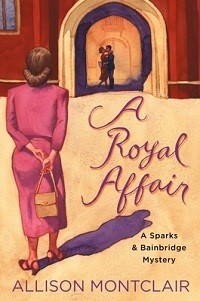 In this second diverting Sparks & Bainbridge mystery, the two partners of the Right Sort Marriage Bureau take on a case for a very high-profile client, which leads them into correspondingly high-stakes political intrigue.
In this second diverting Sparks & Bainbridge mystery, the two partners of the Right Sort Marriage Bureau take on a case for a very high-profile client, which leads them into correspondingly high-stakes political intrigue. It’s 1946 in London, and Iris Sparks, a veteran of secret wartime espionage work, and Gwen Bainbridge, an upper-crust war widow, are several months into their joint venture. While hoping that business picks up sufficiently so they can move into a dreamy new office, they’re approached by Lady Matheson, a cousin of Gwen’s who “works for the Queen in some capacity.” She demands confidentiality before revealing her proposed assignment.
The relationship between HRH Princess Elizabeth and Prince Philip is getting serious, but obstacles stand in their way. A fellow descendant of Queen Victoria and a cousin of Greece’s king, Philip is of sufficiently royal blood, but he has sisters who married Nazis, and his mother, Princess Alice, has a troubled past. Then Lady Matheson reveals a letter she received for Elizabeth which hints at blackmail over mysterious items that Princess Alice left behind on Corfu – but she can’t reveal more details. In effect, Gwen and Iris must vet Prince Philip as a suitor for Elizabeth’s hand, but without drawing attention to the process.
The unintentional detective duo (they solved a murder in their last outing) have plenty of snarky wit, and the repartee flows fast from the outset, whether they’re interviewing a loud-talking female client or ogling the mahogany desks in their hoped-for new office. It's cleverly done, but just when it starts to feel a bit much, the tone becomes more serious as the sleuthing gets underway. Admirers of The Crown and royalty in general should appreciate the details on Prince Philip’s Greek relations, whose backstory of political power, flight, and exile isn’t widely familiar.
Iris and Gwen have a solid dynamic. While they employ their separate talents (the former’s street-smarts, the latter’s insider knowledge of the aristocracy) to further their investigation, they’re also learning from one another. In a continuing mystery series, ongoing character development is key, and Montclair’s latest satisfies on that front.
Each is growing stronger personally, too, as Gwen continues to pursue custody of her adorable young son, and Iris debates how close she wants to get to her new gangster boyfriend. Their own reflections on how they’ve changed are on-point and wryly funny. After they've wrapped up one incident with the police in an amusingly questionable way, Gwen remarks to her partner, “Appalling... we’ve become appalling people, Iris. When did that happen?”
Reading the series opener (The Right Sort of Man) is probably necessary to get the full context of this one, but that’s no hardship at all.
A Royal Affair was published by Minotaur in July; I read it from an Edelweiss e-copy (thanks to the publisher).
Published on August 30, 2020 15:06
August 26, 2020
The Daughters of Erietown by Connie Schultz chronicles a working-class Ohio family in the 20th century
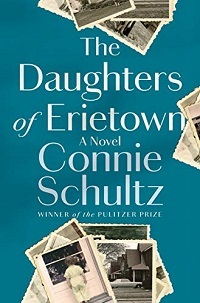 Pulitzer Prize-winning journalist Schultz’s debut novel is completely absorbing from the opening pages through the finale. It follows a working-class family from the fictional Erietown in northeastern Ohio across the 20th century’s second half. While its situations are familiar – teenage pregnancy, generational conflict, infidelity, women’s stifled hopes – the author renders them unique through characters whose vivid inner lives make them feel as real as any of us.
Pulitzer Prize-winning journalist Schultz’s debut novel is completely absorbing from the opening pages through the finale. It follows a working-class family from the fictional Erietown in northeastern Ohio across the 20th century’s second half. While its situations are familiar – teenage pregnancy, generational conflict, infidelity, women’s stifled hopes – the author renders them unique through characters whose vivid inner lives make them feel as real as any of us.In 1975, Samantha McGinty heads to Kent State, the first in her family to attend university. In the car with her parents and brother, Sam thinks back on the terrible day in 1969 that broke her family and made her see her father, Brick, in a new, critical light.
Following this hint of mystery, the narrative smoothly moves back in time to depict Sam’s parents as young people facing troubled circumstances. It’s 1956, and petite sixteen-year-old Ellie Fetters, raised by caring, old-fashioned grandparents, loves red-haired Brick McGinty, top scorer for their high school’s basketball team. Brick grows up protecting his exhausted mother from his father’s abuse and plans a future that involves Ellie, a sports scholarship, and escaping their small rural town. Ellie’s pregnancy derails their dreams, transforming Ellie into a housewife and young mother in their new house in Erietown, while Brick works a union job at the electric plant and, over time, starts feeling resentful.
The story shows how patterns from previous generations repeat themselves, despite people’s awareness of them. The historical period emerges through social attitudes and the impact of larger events; the McGintys’ “Jack and Jesus” wall, with its pictures of Christ and President Kennedy, has a somber meaning after JFK’s assassination. This deeply felt saga takes on tough subjects with profound honesty and carries readers along with the multifaceted, flawed characters as they move through and deal with life.
The Daughters of Erietown was published by Random House in June, and I'd reviewed it from NetGalley for August's Historical Novels Review. I haven't seen it mentioned on many historical fiction sites as yet and would encourage readers of family sagas to go check it out.
Published on August 26, 2020 15:39
August 25, 2020
Facts in Fiction: Truth in Estelle, a guest essay by Linda Stewart Henley
Welcome to Linda Stewart Henley, whose novel Estelle, a multi-period novel that focuses on Edgar Degas' stay in New Orleans, is out today.
~
FACTS IN FICTION: TRUTH IN ESTELLE
Linda Stewart Henley
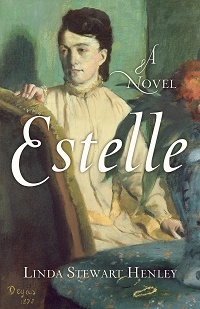 When most people think of Edgar Degas, what comes to mind are images of ballerinas. So when I went to the local library to find books about the artist, I was not surprised to find that most of them turned out to be children’s picture books with reproductions of dancers. But the book I planned to write about Degas wasn’t about those subjects. I wanted to write about him when he was thirty-eight, not yet famous, during his five-month visit to New Orleans to visit French Creole relatives in 1872-73.
When most people think of Edgar Degas, what comes to mind are images of ballerinas. So when I went to the local library to find books about the artist, I was not surprised to find that most of them turned out to be children’s picture books with reproductions of dancers. But the book I planned to write about Degas wasn’t about those subjects. I wanted to write about him when he was thirty-eight, not yet famous, during his five-month visit to New Orleans to visit French Creole relatives in 1872-73.
I ordered piles of books. Books about Impressionist painters, Creole society in New Orleans, Mardi Gras, the architecture on Esplanade Avenue, Louisiana cooking, and Kate Chopin’s 1899 novel The Awakening. I found few volumes on the subject of Degas’s time in New Orleans until I discovered one absolute gem. It came from AbeBooks and cost an unbelievable ninety-nine cents plus three dollars postage. This book, published by the New Orleans Museum of Art entitled Degas and New Orleans: A French Impressionist in America by Gail Feigenbaum and Jean Sutherland Boggs, proved indispensable in providing facts that I wanted for my novel.

A well-researched and documented catalogue written by curators and art historians to accompany a 1999 exhibit, it provided the threads I needed to tell my tale. As I read essays written by the contributors to the catalogue, I learned not only about Degas’s work but also about his family members, fourteen of them, who lived in New Orleans at the time. Degas’s French Creole mother, who died when he was thirteen, had been born there. Estelle, his cousin, was married to his brother René. This was his first and only visit to America and it had a profound effect on him. While there, he painted portraits of the family, but he thought those unimportant and hardly worth his time until he finished A Cotton Office in New Orleans, a large painting depicting his family’s cotton business, which is considered a masterpiece.
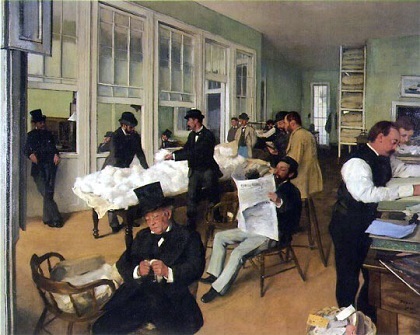 A Cotton Office in New Orleans, Edgar Degas (1873)
A Cotton Office in New Orleans, Edgar Degas (1873)
Although Estelle is a work of fiction, I tried to build the story around many of the true events surrounding the family’s life and times. Surprising to me was the number of buildings and businesses from Degas’s time that still exist today: Arnaud’s and Antoine’s restaurants, the Café du Monde, and the house on Esplanade Avenue where his family lived.
The lavish lifestyle enjoyed by the French Creoles has long since disappeared and the street with fine buildings fallen into disrepair, but if you walk today along the wide boulevard with its neutral ground in the middle planted with spreading live oaks and magnolias, you can almost hear the streetcar rumbling along the tracks and breathe the air of bygone days. New Orleans is a city you don’t forget. The fact that Degas was there, and painted his family’s portraits, can only add to its allure.
~
Linda Stewart Henley is an English-born American who moved to the United States at sixteen. She is a graduate of Newcomb College of Tulane University in New Orleans. She currently lives with her husband in Anacortes, Washington. Estelle, her first novel, is published by She Writes Press.
~
FACTS IN FICTION: TRUTH IN ESTELLE
Linda Stewart Henley
 When most people think of Edgar Degas, what comes to mind are images of ballerinas. So when I went to the local library to find books about the artist, I was not surprised to find that most of them turned out to be children’s picture books with reproductions of dancers. But the book I planned to write about Degas wasn’t about those subjects. I wanted to write about him when he was thirty-eight, not yet famous, during his five-month visit to New Orleans to visit French Creole relatives in 1872-73.
When most people think of Edgar Degas, what comes to mind are images of ballerinas. So when I went to the local library to find books about the artist, I was not surprised to find that most of them turned out to be children’s picture books with reproductions of dancers. But the book I planned to write about Degas wasn’t about those subjects. I wanted to write about him when he was thirty-eight, not yet famous, during his five-month visit to New Orleans to visit French Creole relatives in 1872-73. I ordered piles of books. Books about Impressionist painters, Creole society in New Orleans, Mardi Gras, the architecture on Esplanade Avenue, Louisiana cooking, and Kate Chopin’s 1899 novel The Awakening. I found few volumes on the subject of Degas’s time in New Orleans until I discovered one absolute gem. It came from AbeBooks and cost an unbelievable ninety-nine cents plus three dollars postage. This book, published by the New Orleans Museum of Art entitled Degas and New Orleans: A French Impressionist in America by Gail Feigenbaum and Jean Sutherland Boggs, proved indispensable in providing facts that I wanted for my novel.

A well-researched and documented catalogue written by curators and art historians to accompany a 1999 exhibit, it provided the threads I needed to tell my tale. As I read essays written by the contributors to the catalogue, I learned not only about Degas’s work but also about his family members, fourteen of them, who lived in New Orleans at the time. Degas’s French Creole mother, who died when he was thirteen, had been born there. Estelle, his cousin, was married to his brother René. This was his first and only visit to America and it had a profound effect on him. While there, he painted portraits of the family, but he thought those unimportant and hardly worth his time until he finished A Cotton Office in New Orleans, a large painting depicting his family’s cotton business, which is considered a masterpiece.
 A Cotton Office in New Orleans, Edgar Degas (1873)
A Cotton Office in New Orleans, Edgar Degas (1873)Although Estelle is a work of fiction, I tried to build the story around many of the true events surrounding the family’s life and times. Surprising to me was the number of buildings and businesses from Degas’s time that still exist today: Arnaud’s and Antoine’s restaurants, the Café du Monde, and the house on Esplanade Avenue where his family lived.
The lavish lifestyle enjoyed by the French Creoles has long since disappeared and the street with fine buildings fallen into disrepair, but if you walk today along the wide boulevard with its neutral ground in the middle planted with spreading live oaks and magnolias, you can almost hear the streetcar rumbling along the tracks and breathe the air of bygone days. New Orleans is a city you don’t forget. The fact that Degas was there, and painted his family’s portraits, can only add to its allure.
~
Linda Stewart Henley is an English-born American who moved to the United States at sixteen. She is a graduate of Newcomb College of Tulane University in New Orleans. She currently lives with her husband in Anacortes, Washington. Estelle, her first novel, is published by She Writes Press.
Published on August 25, 2020 05:00



